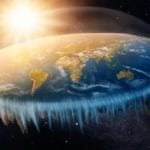 Travel
Travel  Travel
Travel  Creepy
Creepy 10 Haunted Places in Alabama
 History
History Top 10 Tragic Facts about England’s 9 Days Queen
 Food
Food 10 Weird Foods Inspired by Your Favorite Movies
 Religion
Religion 10 Mind-Blowing Claims and Messages Hidden in the Bible Code
 Facts
Facts 10 Things You Never Knew about the History of Gambling
 Weird Stuff
Weird Stuff 10 Cool and Creepy Facts about Collecting Tears
 Humans
Humans The Ten Most Lethal Gunslingers of the Old West
 Misconceptions
Misconceptions 10 Phony Myths and Urban Legends That Just Won’t Die
 History
History 10 Amazing Roman Epitaphs
 Travel
Travel Top 10 Religious Architectural Marvels
 Creepy
Creepy 10 Haunted Places in Alabama
 History
History Top 10 Tragic Facts about England’s 9 Days Queen
Who's Behind Listverse?

Jamie Frater
Head Editor
Jamie founded Listverse due to an insatiable desire to share fascinating, obscure, and bizarre facts. He has been a guest speaker on numerous national radio and television stations and is a five time published author.
More About Us Food
Food 10 Weird Foods Inspired by Your Favorite Movies
 Religion
Religion 10 Mind-Blowing Claims and Messages Hidden in the Bible Code
 Facts
Facts 10 Things You Never Knew about the History of Gambling
 Weird Stuff
Weird Stuff 10 Cool and Creepy Facts about Collecting Tears
 Humans
Humans The Ten Most Lethal Gunslingers of the Old West
 Misconceptions
Misconceptions 10 Phony Myths and Urban Legends That Just Won’t Die
 History
History 10 Amazing Roman Epitaphs
10 Ways Life Would Be Different If The World Was Flat
The “flat Earth” idea has been weirdly popular lately. Working from the theories of scientific minds like Tila Tequila and B.o.B., a whole group of people have insisted that our world is as flat as a pancake for the past couple of years.
It’s a silly idea, but it does bring up an interesting question. What if they were right? What if we really did live on a flat planet?
As it turns out, people have thought about that question before. Scientists actually have a pretty good idea of how things would change. If the world was flat, it would be a wildly different place.
10 Gravity Would Constantly Pull You North
 Gravity doesn’t pull people down; it pulls them toward the center of the Earth. That’s why people don’t fall off our planet—because our gravity is pulling everything right into the middle of the planet. It’s a pretty good system as long as you live on a round planet.
Gravity doesn’t pull people down; it pulls them toward the center of the Earth. That’s why people don’t fall off our planet—because our gravity is pulling everything right into the middle of the planet. It’s a pretty good system as long as you live on a round planet.
On a flat Earth, though, gravity wouldn’t really work the same way. A flat Earth would be thin and long, which would mean that gravity wouldn’t so much pull you down as it would pull you toward whatever happens to be in the middle of the planet. On most flat Earth maps, that is the North Pole.
That would mean that every person on Earth would feel a constant pull dragging them toward the North Pole. It’d probably be a pretty strong one, too—about as strong as the one that pulls you toward the ground. And the farther you got away from the North Pole, the harder it would tug you toward the middle.[1]
Not much would be able to resist it. Water would be pulled out of the ocean, trees and plants would lean out diagonally, and anyone who could hold on tight enough would be sucked into a big ball in the middle of the Arctic.
9 The Sun Would Fry The Planet
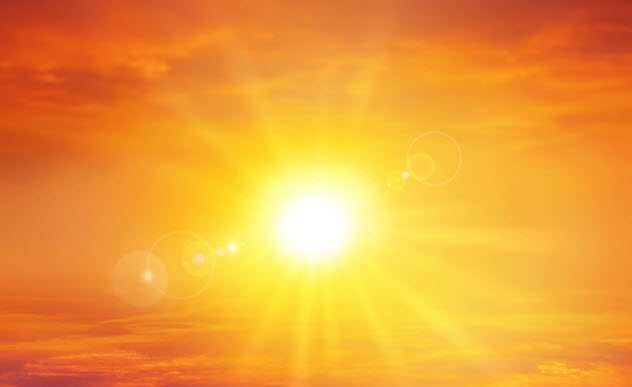
Let’s imagine for a moment that we could somehow get past the gravity problem. Maybe we all start wearing suction cups on our shoes. Or maybe we’d find out that flat Earthers are right—that gravity is a lie and that things just naturally fall down. Even if we weren’t being pulled toward the North Pole, we’d still be in a lot of trouble because a flat Earth would have no magnetic field.
The Earth is protected from cosmic flares and solar radiation by a magnetic field, and that field only exists because our planet rotates. If our planet were to stop rotating for any reason, that field would go away and we’d be in a lot of trouble.
First, our planet would be absolutely bombarded by solar radiation. It would tear away at our planet’s ozone layer and, more importantly, the atmosphere, which would start getting thinner and thinner until it was completely gone.[2]
That would make us vulnerable to asteroids and meteors, too. Without a magnetic field or an atmosphere to protect us, it would just be a matter of time before our planet started getting pelted with asteroids and comets—until the surface of the Earth looked like the Moon.
8 All Forms Of Navigation Would Stop Working

For the few days we’d have to live, there’d be some minor inconveniences. As it turns out, if our Earth was flat, almost nothing we use would work.
Without a mantle, a core, or a magnetic north, all compasses would stop working. That would be inconvenient for humans, but it would be much worse for animals. Birds use the Earth’s magnetic field to navigate, so they wouldn’t know which way to go while flying.
Stars would stay put in the sky, too. You’d no longer be able to stare up at space and see the slow rotation of the heavens. For that matter, you wouldn’t see any difference in the stars in the Northern and Southern Hemispheres, either. No matter where you were or when you looked up at the night sky, it would look exactly the same.
All of which would be nothing compared to how it would affect GPS systems. They wouldn’t just stop working; they’d kill us. If there was no gravity, there’d be no reason for satellites to stay in orbit.[3] If things just fell, satellites would, too. So the approximately 1,300 satellites we’ve put in orbit around our planet would come crashing down on our heads.
7 You’d Be Able To See Really, Really Far Away

Not everything about life on a flat Earth would be bad. There’d be a few perks, too. For one thing, you’d just have to look out your window to see what’s going on halfway across most countries.
Our eyes are actually a lot stronger than they seem to be. The only reason we struggle to see things that are far away is that the Earth curves out of sight after about 5 kilometers (3 mi).[4] If it wasn’t for the Earth’s curve, we’d be able to see things a lot farther away.
On a flat Earth, you’d be able to see about as far into the horizon as you can when you look out the window of a jet plane. Sure, some of the details would be foggy. But light would really stand out. A city a few hundred miles away would make a bright flash of light off in the distance that you wouldn’t be able to miss.
6 Tectonic Plates Would Stop Moving

Our tectonic plates aren’t shaped like puzzle pieces. They’re curved to fit the roundness of the planet, and they only really work on a sphere. Every time a tectonic plate moves, it interacts with a plate on the opposite side of the planet. If the Earth were flat, none of that would work.
It’s not entirely clear how tectonic plates would work on a flat Earth, but our best guess is pretty simple: They wouldn’t. They’d stop moving.
That’d be a pretty big deal. If our planet had no tectonic shift whatsoever, we wouldn’t have any mountains or valleys, either. The planet would be totally flat. There wouldn’t even be oceans—just a consistent pool of water that would equally cover the whole planet.
Even if we did have mountains—because, for example, a wizard put them there—there’d still be major changes. For one thing, volcanoes wouldn’t work anymore and that’d be a huge problem. Volcanoes are a major reason why our atmosphere has oxygen. If those things stopped going off, we’d all have a much harder time breathing.[5]
5 Crossing Antarctica Would Be Impossible
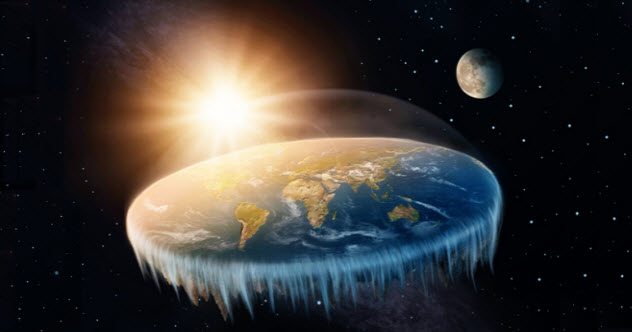
According to most flat Earth models, Antarctica lies on the outer rim of our world. It makes a perfect ring around the planet. Along that edge is a massive ice wall to keep all the water from falling off.
In that case, nobody could ever cross Antarctica—which is something a lot of people have done. People have done it in the dead of winter, they’ve done it on skis, they’ve done it in a car, and they’ve even done it on foot.
It’s not just that a lot of people would have lied about traveling across Antarctica, though. That ice wall would be extremely fragile.[6]
If tectonic plates didn’t work, we’d have to accept that the ice wall is just there by magic. And we’d have to hope that scientists are right about those tectonic plates staying in place. Otherwise, the ones on the edge of the Earth would shift like crazy and it’d just be a matter of time before that ice wall got pushed over the edge.
We’d all be watching the ice wall in terror. At any moment, it could collapse. Water would go spilling out of the Earth, and the end would come.
4 There Wouldn’t Be Any Seasons
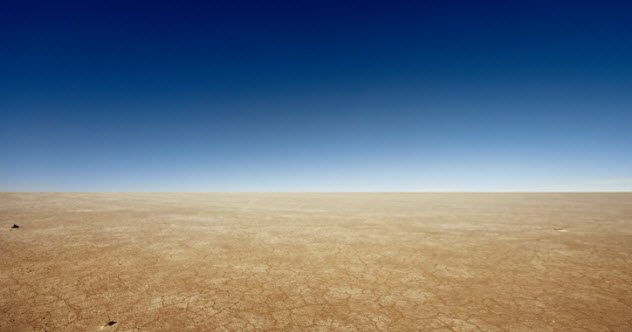
On a flat Earth, we wouldn’t have any seasons. If you hate winter, that might just sound like a good deal.
Our round Earth has seasons because it tilts on its axis. That’s why it’s summer in the Northern Hemisphere when it’s winter in the South. On a flat Earth, that tilting wouldn’t work, especially if the North Pole was in the center. The whole planet would be in the exact same season forever.[7]
That’d affect more things than you might think. If the entire planet was working on the same seasonal clock, there wouldn’t be big differences in the planet’s climates, either. So there wouldn’t be much to stop microbes and animals from traveling throughout the world. Every disease that broke out in one part of the world would spread farther and faster than we could imagine.
3 There Would Be No Rain
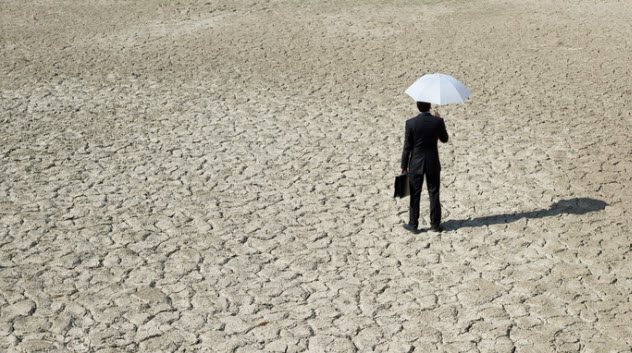
If the Earth were flat, wind would only blow in two directions: north and south. And that would cause some massive catastrophes.
The rotation of our planet causes winds and ocean currents to move from east to west. If Earth stopped rotating, those winds would stop. The Coriolis effect would be completely stopped, and that would halt almost every storm on the planet.[8]
That’s not a good thing. Sure, it’d be nice not to have to deal with hurricanes, but that would stop the entire system that makes rain fall from the sky. Every day would be completely dry.
There might be a little bit of life along the coastline, but everything else would turn into a vast, empty desert.
2 The Sun Would Crash Into The Earth
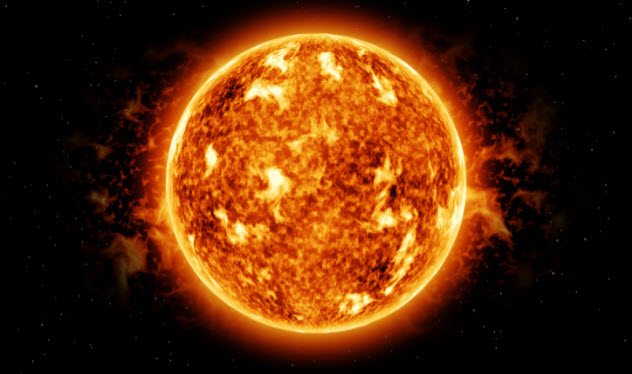
Not that any of that would matter. If the Earth were flat, all life on the planet would end quickly when the Sun came crashing down on us.
On our round Earth, a combination of momentum and gravity keeps us in orbit around the Sun. According to the flat Earth theory, we’re not moving at all. We’re completely stationary, sitting underneath a hovering Sun. That’s a huge problem because there wouldn’t be anything stopping gravity from pulling us directly to our fiery deaths in the heart of the Sun.
Admittedly, that would only be true if gravity wasn’t a lie perpetuated by an Illuminati conspiracy. Most flat Earthers think that things just fall down naturally, without any gravity getting the way, and that the Sun is a tiny ball of fire no more than 6,400 kilometers (4,000 mi) overhead.
If that were the case, it would fix one problem while creating a much bigger one. Sure, we wouldn’t get pulled into the Sun. But if the laws of gravity said that everything just fell down, there’d be no reason for the Sun to break the rules. Every star, moon, and planet in the universe would instantly come crashing down on our heads.[9]
1 It Would Be The Vastest Conspiracy Imaginable
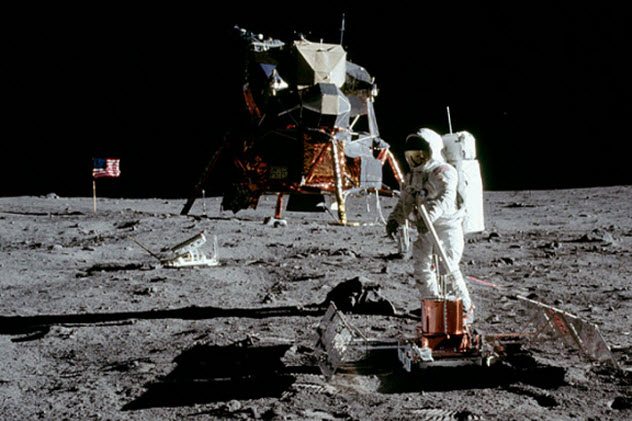
If we can suspend our disbelief for a moment and imagine that we lived on a flat Earth that just worked perfectly, there’d still be a big issue to deal with. It’d be hard to trust anybody on a planet where millions of people are involved in the biggest and most pointless conspiracy imaginable.
Flat Earth conspiracy theorists say that the round Earth is a conspiracy perpetrated by NASA, but they’re kind of selling that idea short. Members of NASA wouldn’t be the only people behind it. Every person on Earth who has ever done anything involving space or Antarctica would be in on it.
It’s hard to get an accurate number of how many people that would be, but we know that 400,000 people were involved in the Apollo project. We weren’t able to get a number for the Soviet space program, but it’s safe to guess that they employed a similar number of people over its 60-year run.[10]
On top of that, about 8,000 objects have already been blasted into space by various people and groups. That includes individuals like Adam Cudworth, a 19-year-old boy who sent a £30 camera into space to photograph the Earth’s curves in 2012. He would have been in on the conspiracy, too. Then there would be all the educators cramming these lies into every curriculum taught on this planet.
If the Earth were flat, there would be millions upon millions of people who knew the truth but refused to tell anyone. Millions of people would be actively lying to your face every day.
In a world like that, crashing into the Sun would be a relief.
Read about more bizarre Earth theories on 10 Absurd Claims Of Modern Flat Earth Conspiracy Theorists and 10 Bizarre Theories About The Earth That People Believe.






